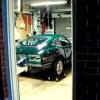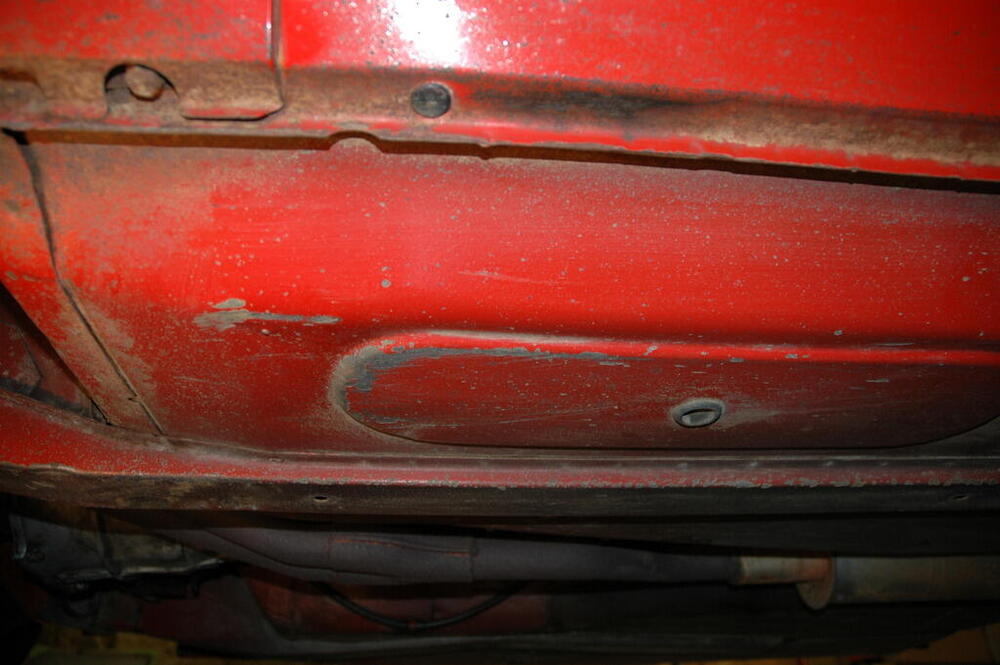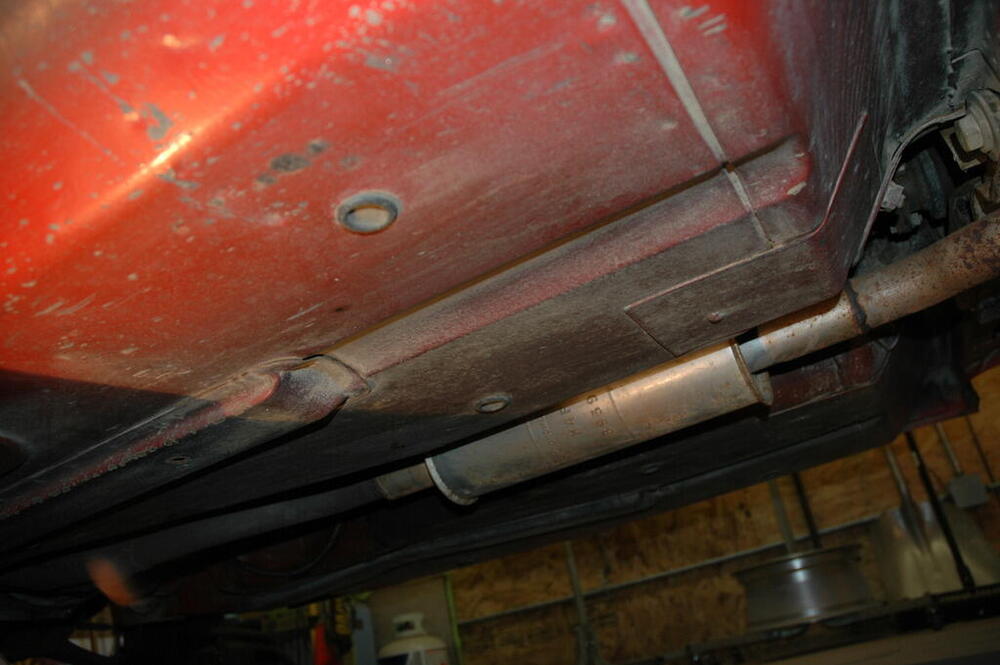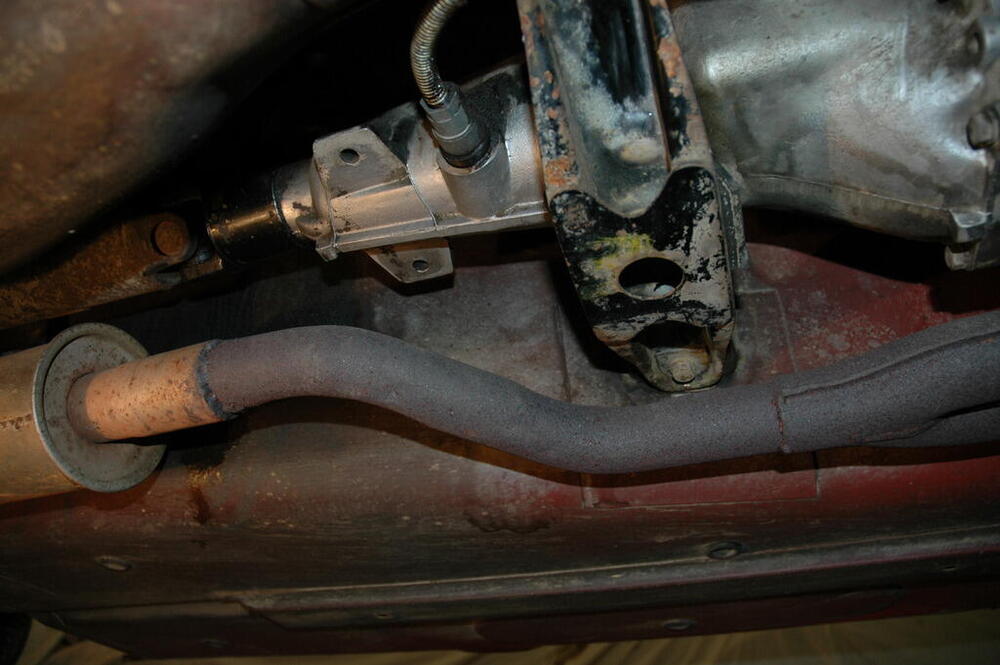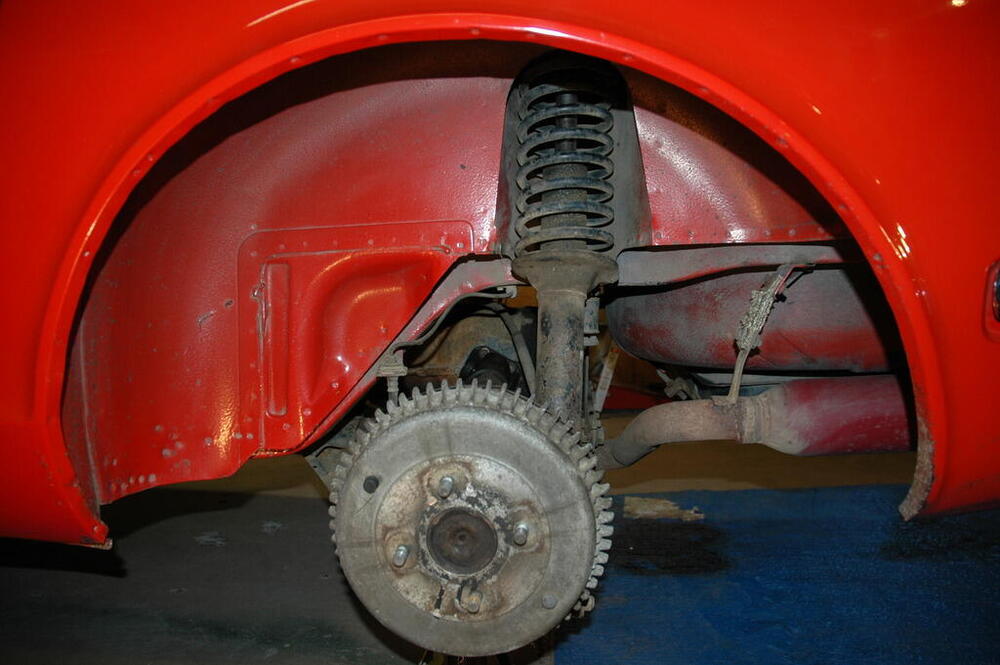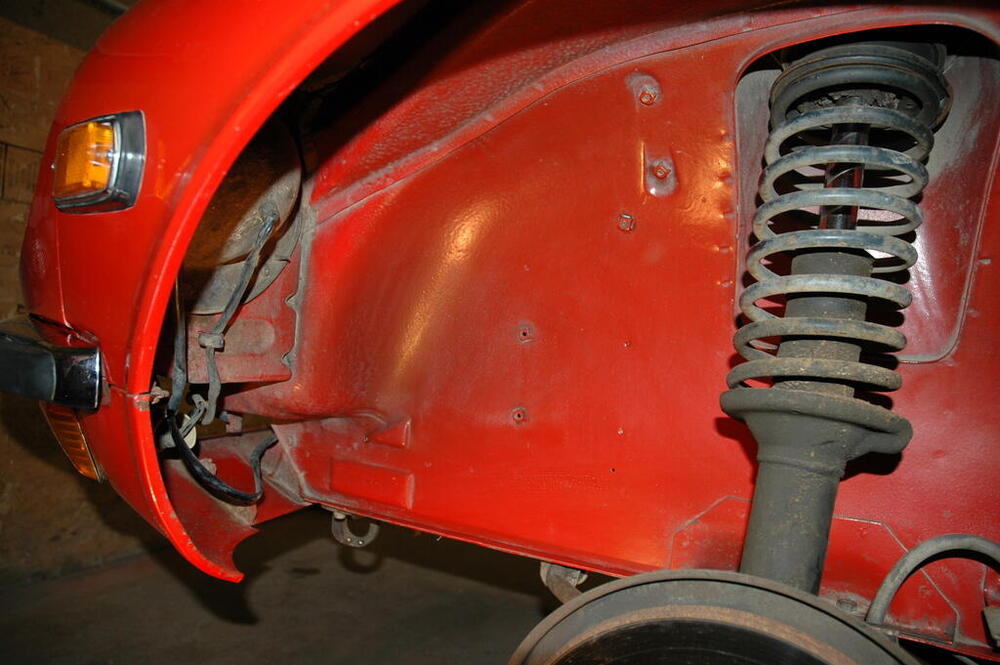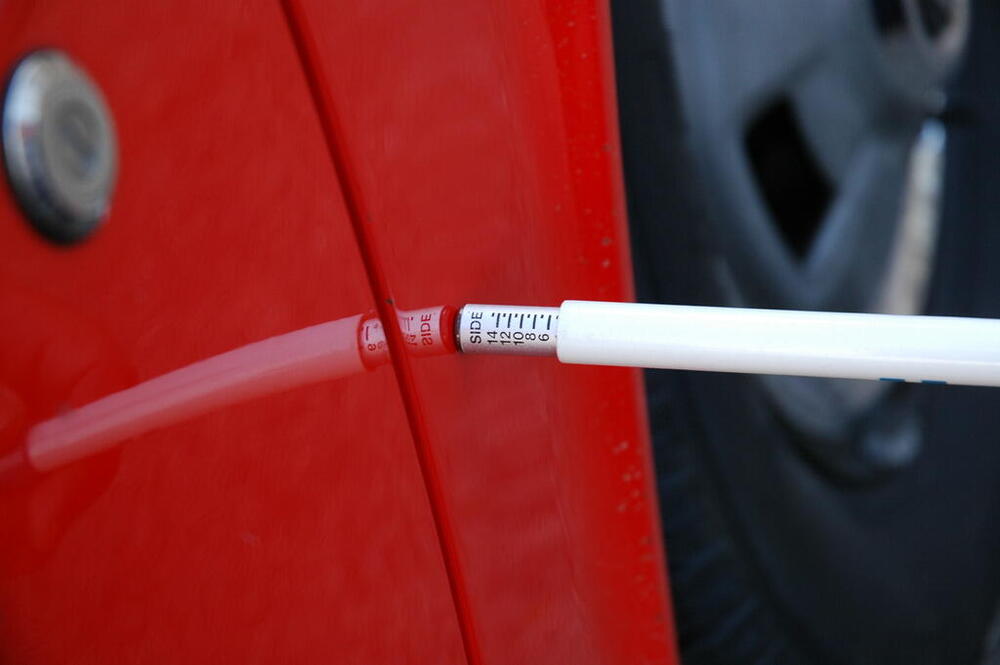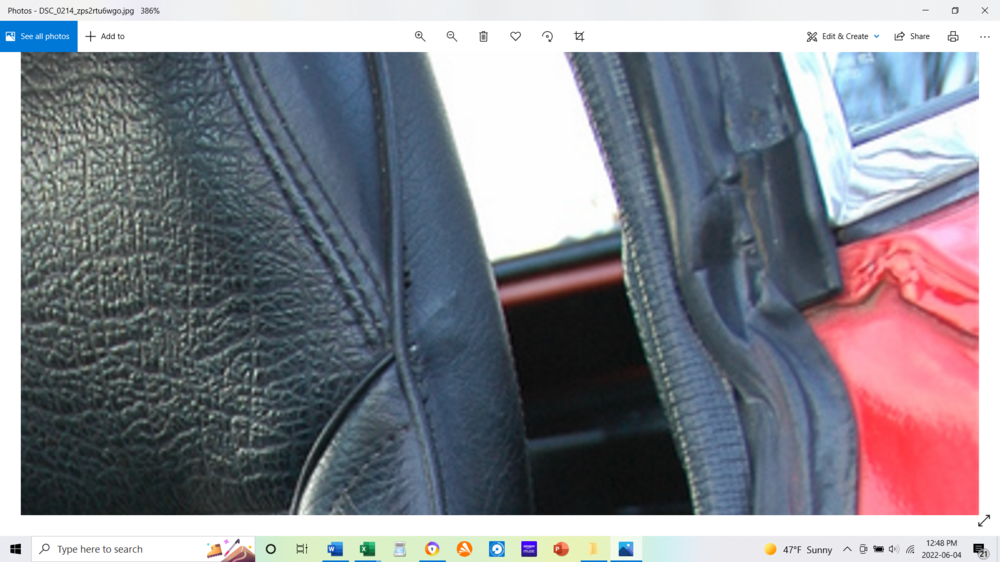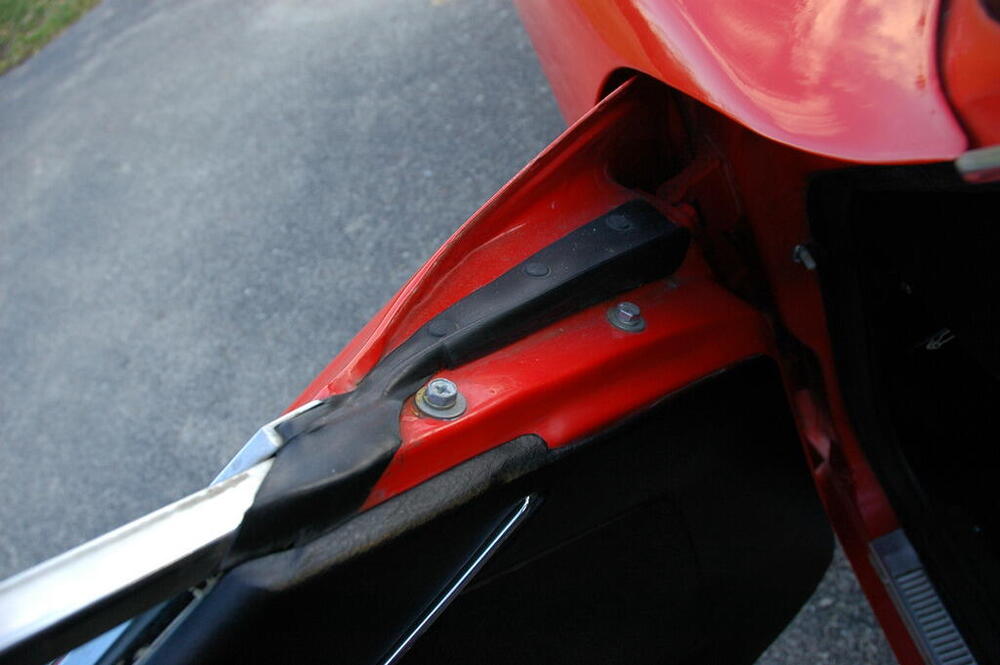Everything posted by Namerow
-
ZX rear caliper
Discussion? Pictures?
-
ZX rear caliper
- Hoarding special/rare Z-parts? enter them here! For sale or not!
Very nice. Was there a specific regulation that led to the requirement for this double-lamp fixture?- 1971 HLS30-14938 "Lily" build
This is the same as what I found when removing the insulator pads from my 5/70 -- light, patchy use of adhesive but most relying on the mechanical support from those square tabs. I think the adhesive is used to prevent bagging, while the tabs provide the main vertical support. If your insulator pad(s) are shot, I can provide you with some notes on how I made new ones from scratch. I was quite happy with the end result.- 1970 240Z Works Rally - the road to restoration
What is the purpose of pumping gas through the diff cooling system?- 1971 HLS30-14938 "Lily" build
I would suggest you use glazier's mastic 'rope' as the sealant between the tail light lens and housing. It'll provide all the seal that you need and it's not so sticky as to make future disassembly a problem. The alternative is liquid window caulking. There is a 'strippable' version (clear) that would probably be a better bet than the more permanent types. Don't overlook the little drain holes at the bottom of each lens. Each drain hole should be fitted with a small rectangle of felt (cut to shape from a sheet of 1/8" thickness, purchasable from a crafts store like Michael's). The purpose of the felt is to keep small, uninvited visitors (spiders, etc.) from setting up house inside your tail light assembly. The lenses will come up nicely with buffing. Try not to buff away the raised manufacturer's info. You'll need to leave that area as-is.- 5/72 240z and undercoating
Undercoatings of the 1970's were variously described as, 'oil', 'tar', 'asphalt', or 'wax' ('paraffin' if you're a Brit). If you investigate further, you'll find that each of these terms is somewhat generic and not really precise from any chemical engineering perspective. For automotive purposes, 'oil' meant sprayed-on and could be anything from heavyweight used crankcase oil to purpose-blended lightweight stuff. 'Tar' meant 'thicker but still sprayed-on', while 'asphalt' translated to 'thick and usually brushed-on'. 'Wax' was typically interpreted to be 'less oily', sprayed-applied, and suitable for internal body cavities like doors and rockers (Zeibart and Wax-oyl were two of the better-known wax-type aftermarket undercoating treatments). It's hard to say what kind of material Nissan used for the underside of the Z's. Obviously, it bonded well to the metal and skinned over nicely so that the paint spray adhered (for fifty years). I wonder, though, whether Nissan's objective may have been sound deadening as much as corrosion protection. Like many others, I remember using brush-on undercoating on the underside of my first Z after the first rust blooms appeared. I think that we all hoped it would 'seal off' the underside of the car from further exposure to winter road de-icing salt. It certainly looked the part. Alas, it didn't work.- Nissan's Global Newsroom archive
Take a look at the headlines during Years 1963 - 1970. Those were heady times for Nissan and the Japanese auto industry. New models introduced. New assembly plants started around the world. New car transporter ships being launched and new harbour facilities built to service them. New headquarters building constructed. Motorsports entries and victories. New sales records set.- Datsun-240z Vs Fairlady-z432
Both options (professional repair vs do-it-yourself) have their good and bad considerations. The do-it-yourself option requires much attention to detail in order to create a good and lasting result. There are two or three good threads available on CZCC that will provide you with a list of recommended tools, materials, and procedures. Based on my own experience, the main limitation is that the final exterior finish -- typically accomplished using texturized 'bed liner' paint -- has 'look' and 'feel' that is different from the original textured vinyl. Although a casual observer would not notice the difference, a knowledgeable person will see it very quickly. I found some upholstery vinyl (long sheet with 1m width) that had a texture very close to the original material used by Nissan. Unfortunately, it was only available with a bonded fabric backing. Despite the use of a heat gun, it would not stretch enough to follow the contours of the S30 dash surface (those contours become quite extreme around the openings for the instrument pods. If you can find a suitable vinyl that does not have a fabric backing, you might be able to achieve a successful result. I look forward to reading about your dash restoration. There may be materials available to you in Japan that we in North America have not discovered.- 1970 240Z Works Rally - the road to restoration
Perhaps a letter to the manager of the new (?) Nissan Heritage Zone -- listed as a part of the Global Headquarters Gallery in Yokohama -- might find them willing to support the cost of digitizing the two reels of historic film. The NHZ includes a small reference library and would seem a logical curator for films such as these.- Sexy? or sacrilege?
I like it, but I think I'd like to see a rear-quarter view before I make up my mind.- Seat color help
I used a small, specialty paint supplier who mixed up a custom batch of vinyl paint using a small swatch of my car's seat vinyl as the basis for the colour blend. The resulting colour match was perfect and the application (standard HVLP gun) was trouble-free. I did this job five years ago and the vinyl paint still looks as good as when first applied. The paint specialist (Parasol) is based in Toronto, Canada. You should be able to find a similar supplier in the U.S. south-east. Try looking for boat upholstery specialists.- 240ZBUILTBYME 1971 240z HS-001063 Project Georgia
- hot water to manifold?
Not sure that I agree. Once the engine gets up to normal operating temps, the carb heating loop is closed (as in: inactive, does nothing, might as well not be there). Any emissions-related benefits would be restricted to start and warmup conditions, where the presence of the manual choke would overwhelm any contribution that carb heating might make toward reduced exhaust emissions. Remember, too, that the federal exhaust emissions standards (and related compliance testing) at the time were performed only at ~ room temperature ambient air conditions and with the engine up to operating temperature (i.e. choke off, main thermostat open). It was always my understanding that the carb heating circuit was introduced in an effort to inhibit drivability issues caused by carb icing. Not all carbureted engines suffer from this problem. As well, it apparently isn't specific to constant-vacuum carbs, nor to inline engines, nor to water-cooled engines. Nor to cold-weather operating conditions. It seems to occur only with certain combinations of engine, carburetor, and engine compartment layout and under certain air temperature/humidity/engine speed/throttle-opening conditions. Evidently, Nissan decided that it had heard enough reports of problems with early Z's to warrant spending the (not-inconsiderable) amount of money required to install the carb heating loop (complete with revised castings for the carb bodies and the thermostat housing). There's a useful discussion of the Z's carb heating system on Hybrid-Z, here. And if you use the search function here on the CZCC site, you'll discover that several discussions about the system have taken place over the years.- What is your (most) valuable "made it myself" PART! and most valuable lesson learned about Z-cars!
I 'misremembered' on that rail gauge. It was actually was 4 ft. 10-7/8 in. and it applies to the trackage used for the Toronto streetcar and subway systems. Otherwise, our Canadian mainline railways use the more common 4 ft. 8-1/2 in. (because to do otherwise would mean that our trains wouldn't be able to enter the USA and U.S. trains wouldn't be able to enter Canada). Here's how the so-called 'Toronto gauge' came to be: The Toronto Street Railway created the basis for the Toronto streetcar system when it opened a horsecar line in 1861. At the time, the city's streets were unpaved. A broader-than-standard 'Toronto gauge' was mandated by the city in order to allow not just horse-drawn passenger carriages ('streetcars'), but also both horse-drawn cargo wagons to use the tracks. The rail used for these horsecar tracks was a 'step' type. The horse-drawn streetcars were equipped with iron wheels with inboard flanges. They ran on the outer (upper) step of the rail, with the wheel flanges providing guidance. The horse-drawn cargo wagons, on the other hand, used wheels made of wood, with a flat iron tread and no flange. These cargo wagons used the inner (lower) step of the rail, with the upper step of the rail serving to guide the wagon along the track. In order to accommodate this arrangement, the track gauge had to be 4 feet, 11 inches*. When the TSR's franchise ended in 1891, a new company (the Toronto Railway Company) took over the system and replaced horse-drawn streetcars with electric trams. Rather than rip up all of the existing trackage, it continued the use of Toronto gauge and had its electric trams' equipped with axles whose wheel separations were set for the Toronto gauge. When the subway system was built in the 1950's, the transit commission decided to extent the use of the Toronto gauge to the new system (probably so that it could use common storage yards and service depots for the streetcars and the new subway vehicles). (* later reduced by 1/8" for some reason I haven't been able to determine) Toronto wasn't at all unique in having a horse-drawn streetcar system. However, I think the the 'Toronto gauge' was (and remains) unique to the city -- as did our streetcar system for many years (at least, in Canada and the US). Just about everywhere else, the municipal transit authorities replaced streetcars with buses in the 1950's and ripped up their streetcar tracks. Although some claim this was a conspiracy on the part of the U.S. auto industry (sell more cars and buses) and the oil companies (sell more fuel), there were lots of good reasons: 1) The streetcars impeded the flow of automobile traffic; 2) the tracks were tough on vehicles equipped with bias-ply tires (not to mention motorcycles and bicycles); 2) no overhead electrical wiring needed; 3) new routes could be created without the need to tear up pavement and install tracks and overhead wiring; 4) no track or electrical systems to maintain; 5) buses could change direction and cross each other's paths without the need for track/wire switches or crossovers. Streetcars really work best when they operate on a dedicated right-of-way (typically, a centre strip running down the middle of the road). However, that requires either a very wide street or the sacrificing of a pavement lane. And there's still that unsightly business of putting up an overhead power wire system. Some people love streetcars. Others hate them.- What is your (most) valuable "made it myself" PART! and most valuable lesson learned about Z-cars!
Here in Canada, we gradually switched to the metric system over the course of the 1970's. Since this period coincided with my entry into the engineering profession, I got to witness the changeover as a consumer, an engineer, and as someone living in a country right next door to the US (which, to this day, has never really embraced the metric system). Despite the many positive aspects of the metric system, you will still find that Canadian grocery stores advertise prices in both $/kg and $/lb -- although, curiously, we've gone pretty much 100% to metric when it comes to volumes (no more gallons, quarts or pints... unless you're buying berries or small fruit). Outside of the food store, we still have difficulties applying the metric system for real estate (lot frontages and depths are still quoted in feet and property sizes are better understood by most when stated in acres rather than hectares). Gas, however, is uniformly sold by the litre, temperature levels are almost always quoted in degrees C (except for the kitchen oven), and fuel economy is pretty much always stated in litres per 100km (I still like mpg... but only if the 'g' is measured in Imperial gallons). In the technical work that I was involved with in the 1970's, there was also a mixture of metric and 'imperial' measures. Railways in North America were tied to a track gauge system measured in feet and inches (4 ft. 7-1/8", IIRC) and that seemed to find its way up through the rest of the vehicle and infrastructure layouts. Steel rails were -- and I believe still are -- categorized by weight per unit length, measured in lb/ft. Buses and trucks were an odd mix of metric and imperial (trailers, for example, are still often categorized as 45-footers and 53-footers -- the latter oversized to accommodate two extra rows of 4-foot pallets). Despite the prevalence of metric fasteners, you have to work hard to find a set of metric drill bits (for your 1/4" or 3/8" electric drill). Metric lumber? Not gonna happen in North America. Which means that the residential homebuilding industry still has to accommodate fps. It was interesting to watch how the US auto industry tried to deal with the metric system during the 1970's. The vehicle engineers and designers really wanted to go metric (note: 'designers' are not 'stylists', although stylists sometimes like to be called designers), but the sunk costs in fps-based tooling, infrastructure and support equipment made it difficult. And the American consumer would have problems dealing with a speedometer calibrated in km/hr. I believe that it was decided to start by going metric with the engine design only. The rest of the vehicle systems' designs gradually followed suit afterwards (except for the speedometer calibration and the diameter of the road wheels). Which is why most of us have two sets of socket wrenches (to fit our 1/4", 3/8", and 1/2"-drive ratchets).- Z's on BAT and other places collection
To illustrate zspert's points, here are a couple of photos of VIN 19769 (01/71), taken from the nicely-documented BaT listing when the car was up for sale in 2016. Both paint and lack of paint are in evidence, depending on the location on the underside.- Front Door Seal
- Front Door Seal
Here are pictures from a very original 1971 Z (VIN019769) that illustrate what the OE seals looked like. Maybe they'll help you sort out your quandary...- Dash Removal with glove box in.
If, instead, you decide to pull out the glovebox liner first, these are the notes I wrote down after getting the liner out of my 70 Z's dash: Grasp the centre of the front lip of the liner’s roof panel, then pull the lip outwards until the top corners of the liner clear the inside corners of the dash opening. One corner may clear before the other does. Now continue pulling the liner Roof through the dash opening by about 1”, pivoting the liner on its front lower edge in the process. Working from behind the dash, push the lower corners of the liner inward so that the liner's floor panel buckles. Keep pushing until the lower corners of the liner clear the lower lip of the dash opening. Work from side to side. Push the lower corners of the liner out of the dash by about ½”. However, keep the front edge of the liner’s Floor resting on top of the lower ledge of the dash opening. With both of the liner’s lower corners now free, resume tilting the liner out from the top until the entire liner comes free. Throughout the process, the front edge of the liner Floor rests on top of the lower ledge of the dash opening. Good luck!- 280z frame rails
Charlie Osborne at ZeddFindings has been in business for many, many years. I don't think I've ever heard anyone accuse him of being 'unreliable'. That certainly wasn't my experience. Until the recent arrival of KlassicFab on the Datsun scene, he was the market's leading supplier for Z frame rail and floor replacements.- 280z inner frame/fender
I'm not aware of any vendor that offers an inner fender panel replacement (whether complete, or just the bottom strip). If the rot on your car hasn't travelled too far up from the frame rail seam, the panel is pretty straight from front to rear and it shouldn't be too difficult to graft in new metal cut from flat sheet (20 gauge, IIRC). A CZCC member from Calgary, Alberta (name?) posted a detailed build about 2 years ago that illustrated this repair quite nicely.- 280z frame rails
I know of two vendors that offer the LHS and RHS rails separately... ZeddFindings (https://www.datsunzparts.com/services/frame-rails/) KlassicFab JDM (https://kfvintagejdm.com/shop/datsun/front-chassis-rail-left-side/) Neither offer rails that are specifically identified as '280Z'. Perhaps others will offer opinions as to whether or not the 240Z rail can be successfully adapted to a 280Z. IIRC, the main design difference is a reduction in width over the front-most 6" of the 280Z rail, required for clearance for the wider 280Z radiator.- Ongoing rust repair on my '75
Great progress. It's always nice to have a talented welder in the family! Can you comment on how you removed the old sheet metal? Did you drill out spot welds? Metal saw? Angle grinder? All of the above?- 240ZBUILTBYME 1971 240z HS-001063 Project Georgia
Perth! Well then, that explains everything Your dash surface was pretty badly damaged. It looks like the shop did an excellent job. A bit of a head-scratcher, though, because this type of work typically requires a large vacuum chamber with heat treatment (steam, IIRC) in order to pull the new vinyl overlay down onto the restored form. Did you get a chance to look at the equipment they use? - Hoarding special/rare Z-parts? enter them here! For sale or not!
Important Information
By using this site, you agree to our Privacy Policy and Guidelines. We have placed cookies on your device to help make this website better. You can adjust your cookie settings, otherwise we'll assume you're okay to continue.




